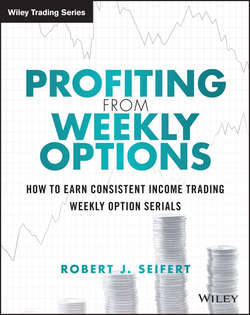Читать книгу Profiting from Weekly Options - Seifert Robert J. - Страница 10
На сайте Литреса книга снята с продажи.
Chapter 1
Market Psychology: The Mind-Set of a Trader
The Cotton Panic of 1837: Land, Commodities, and Government
ОглавлениеThe first bubble addressed took place in Europe. Let's turn our attention to the original panic in the United States. This bubble is not nearly as celebrated as its European counterpart, but it was equally as deadly. It occurred during the presidency of Andrew Jackson, 1829–1837. When the bubble burst on May 10, 1837, Martin Van Buren was the president, but make no mistake – the stage was set in the prior 10 years.
The war of 1812 was really America's second Revolutionary War. The British invasion was almost successful, and the United States came very close to being “the colonies” again. As with most wars, there is a positive effect on the economy, as manufacturing and commerce in general have a tendency to grow. Capital goods must be replaced at a far greater rate than during times of peace. Usually, the prosperity lasts a few years; however, once the “war effect” ends, a general slowdown is almost sure to occur. In the United States, it manifested itself with the downturn of 1819–1821.
By the middle of 1821, the country was on its way to a recovery. The United States was expanding it western borders; new agriculture opportunities and trade brought in an era of exceptional wealth. The population went up by almost 60 percent, primarily shifting to the West, where commerce flourished North and South along the Mississippi River valley.
When the Jacksonian Era began in 1829, the United States had expanded its borders, and had also built an infrastructure of roads and canals that allowed for a flow of goods not only North and South on the Mississippi but also from the East Coast ports to the western colonies as far as Ohio.
Jackson was a very tough and vengeful man. He had been a war hero, a US senator, a landowner – and his nickname “Old Hickory” said it all. It was the merciless streak that helped to set the wheels in motion for the disaster that was to follow.
As with any time of prosperity, the demand for commodities and the land to produce them continued to increase. By law, public land in the West and Mississippi Valley could be purchased for $1.25 per acre. Sales of land increased steadily in the 1830s, and landowners started to feel the first wealth effect. Land in some prime growing areas of the Mississippi more than quadrupled in value in five years (Iowa farmland in 2014?).
In government, a nasty personal feud between President Jackson and Nicholas Biddle, the owner of the Second Bank of the United States, resulted in the revocation of its charter. Jackson replaced the Second Bank of the United States (lender of last resort) with “Specie Circular” (gold and silver coins bimetal standard) and began to deposit money in state-chartered banks.
Unfortunately, the move to gold and silver coins did not allow for any expansion of the banking system. Consequently, when individual banks needed credit to cover land transactions, there was no institution to loan them the funds. This put banks in a huge dilemma. To counter the problem, the state banks actually exacerbated the situation by lending in “paper,” or “kiting” their own notes to cover the land speculation. The thirst for “King Cotton” in Europe was thought to be unquenchable. Conversely, with inflation on the rise, signs of darkness started to emerge in late 1835. Cotton prices doubled and it fetched nearly 20 cents a pound, and inflation was headed toward double digits.
In 1836, Britain forced new and punitive trade agreements on the United States, and greatly reduced exporting and importing with America. For any trade that did take place, the British demanded payment in hard currency, not cotton. As it turned out, the demand for cotton was not infinite. By the winter of 1837, rising inflation led to social unrest. On February 14, a large assembly of angry men met in New York City to demand that the government curb exploding prices. When their demands for lower prices fell on deaf ears, the meeting turned ugly. The assembly turned into a mob and took to the street with torches. The military was called out to quell the violence, but before peace could be restored, several warehouses filled with grain were burnt to the ground. One of the unfortunate flour merchants noted with sarcasm that “burning the goods would not have a tendency to lower price.”
Commencing in April, a number of large dry-goods companies went under. These companies were the nineteenth-century equivalent of Walmart, and their demise shook the foundations of American finance. The price of cotton began to collapse; in less than six weeks, it lost 50 percent of its value. By the first week in May, the banking system was in a state of panic. On May 10, 1837, with cotton and land prices collapsing and with nowhere to turn for “a lender of last resort,” all banks in New York City stopped paying in Specie. Within two months of the New York Bank failure, 40 percent of the banks in the United States went broke. Interest rates turned negative as the ensuing panic drove the country into a financial depression.
Although not as famous as the Great Depression of the 1930s, the collapse of the banking system in 1837 led to six years of “unprecedented misery” in the United States. By some estimates, in the industrial areas of the Northeast unemployment reached a staggering 30 percent. It took another war to pull the nation out of the funk.
